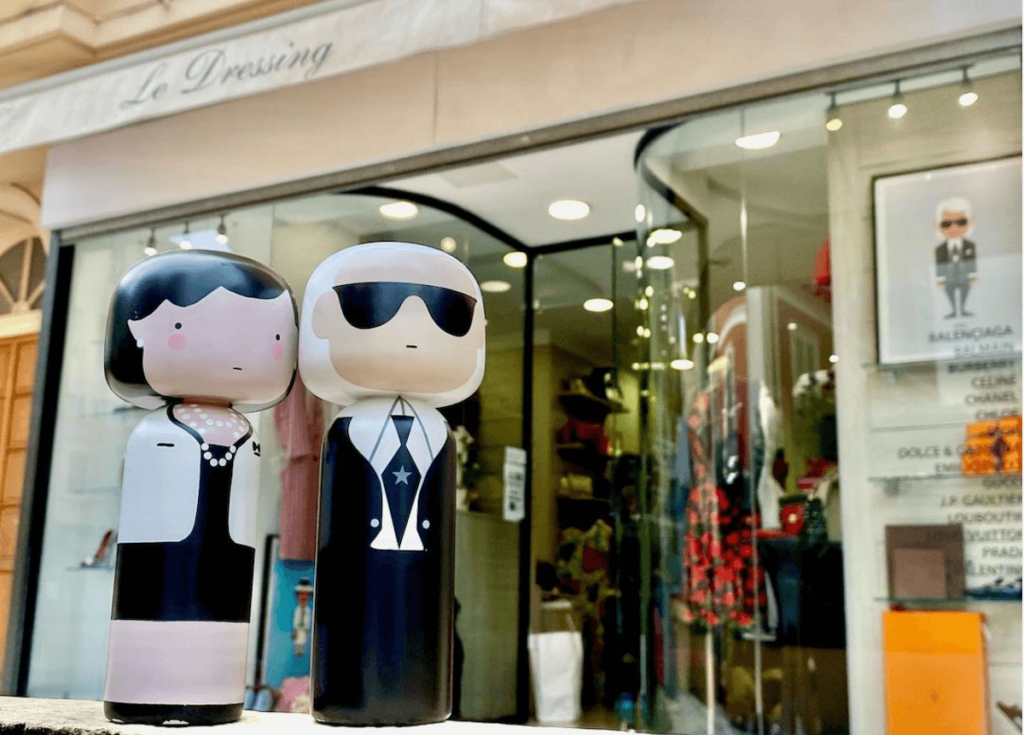Why secondhand shops are a gold mine for luxury fashion in Monaco

As consumers begin to shop more sustainably, the secondhand market has taken off with designer labels and rare finds now filling the shelves. This trend is nothing new when it comes to Monaco.
As the pandemic has heightened our awareness of the climate crisis and the environment, many shoppers have reconsidered their habits. In an effort to be more sustainable, an increasing number of consumers is looking to buy secondhand clothes… but not just any clothes. According to a study by the Boston Consulting Group, the secondary market for luxury goods is now moving into the spotlight, becoming one of the fastest growing areas of luxury. Its share of total personal luxury goods grew to around 9% since 2018.
Shop owners have noticed that their customers are now paying more attention to the value of their purchases. “I’ve been here for 15 years and we’re still making more and more money, every year” says Odile Loeb-Flory, owner of the secondhand store “Chiner Chic”, located on the border between Monaco and France.
Here, people don’t wear the same clothes twice
Customers know what they want
In Odile’s shop, customers can find designer labels at discounted prices. Big names line the shelves, including Chanel, Hermès and Valentino. Clothing here is by no means cheap, but compared with their retail prices, there are big savings on offer. For example, a pair of secondhand Fendi shoes can be bought for €240, instead of €1,280. The shopkeeper explains that whilst shopping here, customers are after high-end, quality items of clothing that are HEWI (“hardly ever worn it”). “My clients come in to find items that are Made in France or Made in Italy,” she explains, adding that “garments made in China are bad for your skin.”
Helen Rimsberg, owner of the three luxury secondhand stores “Le Dressing” , describes her customers as being “a bit difficult.” Having run her businesses for 20 years in Monaco, she knows the market well, explaining how “people don’t wear the same clothes twice, otherwise it looks as though you have money problems.” As such, many wealthy people come in store to spruce up their wardrobes, as well as those less well off, who see this market as an affordable way to wear high-end fashion.
Although clothes offer good value for money, secondhand stores still have high standards. Before making into onto the shelves, every item is carefully inspected. Any designer pieces found to be counterfeit, or garments of poor quality, will not make it onto the shop floor.
Everyone, even the richest people, all end up buying from here
>> READ ALSO: From emerging brands to fashion weeks, fashion is still reckoning with Covid-19
Rare pieces on sale
“At first, people were a bit hesitant about wearing secondhand clothes, but in the end, everyone, even the richest people, all ended up buying them,” says Odile. Shopping secondhand it is better in so many ways, especially in the Principality. Odile reveals how “Monaco is lucky to have such an international clientele, which means that clothes are brought in from all over the world.” As a result, secondhand stores in Monaco are a real treasure trove. Here, you can find luxury items from a whole range of other countries… all sold with a discount of up to 70%.
>> READ ALSO: Where can I buy sustainable fashion on the Riviera?
Secondhand stores are a real gold mine. The history of fashion lies behind their doors, as shops like Odile’s have vintage pieces on sale, unavailable or incredibly hard to find anywhere else. Be that a Gianni Versace coat, a dress by Saint-Laurent or trousers from Thierry Mugler, shoppers have the chance to make their wardrobe unique. Exquisite materials are used, such as crêpe de chine silk or embroidered velvet, which are incredibly hard to find nowadays. A true fashion guru, Odile assures that “you could go around Monaco, but you won’t a dress like that.” Some rare garments that can be found in the Principality are more than vintage luxury. They are a testament to a long tradition of high-quality fashion that does not lose its appeal even after several decades.
>> READ ALSO: How easy is it to make your wardrobe eco-friendly?









